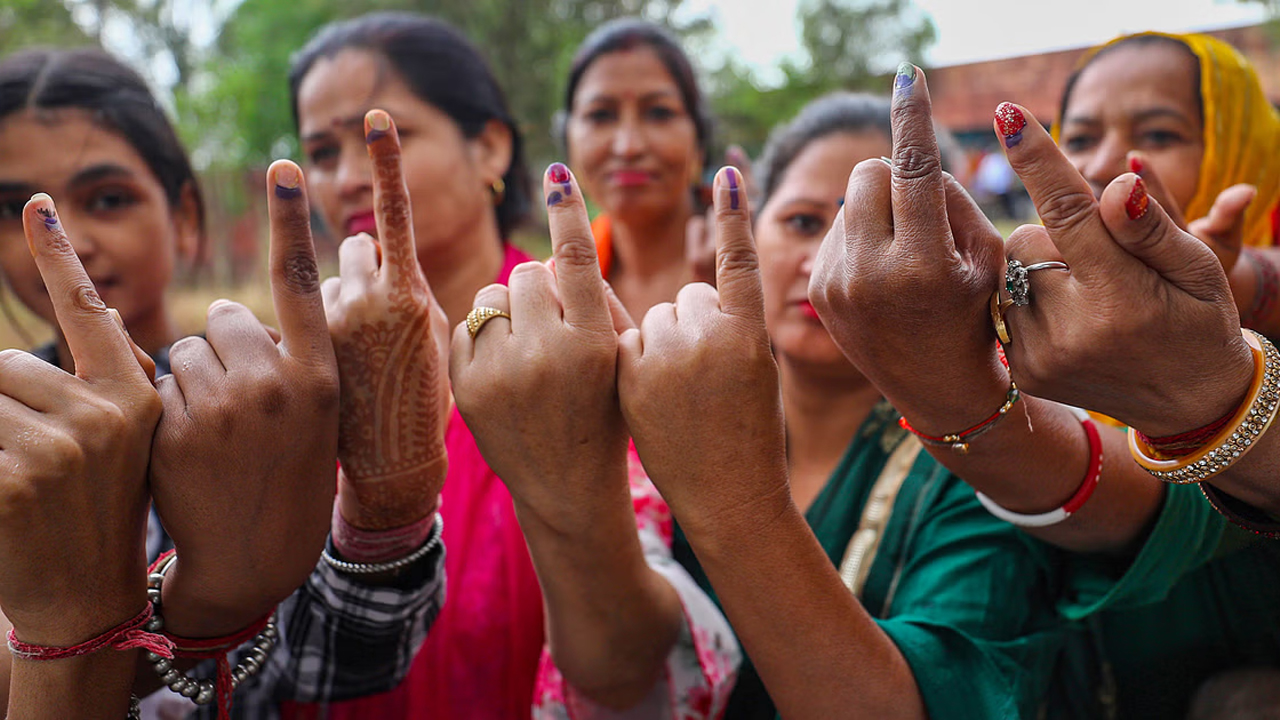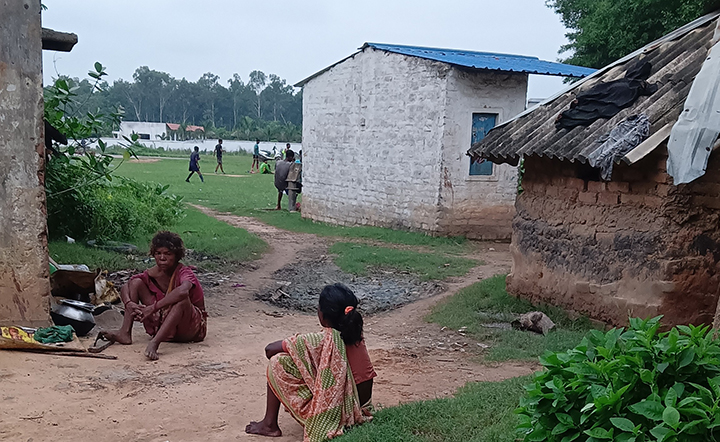Women, in present-day India, are emerging as a separate vote bank, independent of their caste and religious identities.
Groundxero | July 22, 2024
By Ishanee Dhar
“We have to vote, it’s a matter of our existence”, said Lakkhi, a Sabar woman who has been compelled to live a troubled existence, as her husband has been bedridden for the past few months. Belonging to one of the most marginalised communities amongst the Adivisis, her life revolves around collecting wood from the forests. The free ration, given by the government, is another way for her to subscribe to some kind of a ‘livable life’. Hence, Lakkhi knows the importance of that one vote she casts. “Here (a Sabar colony in Jhargram) most of the families’ only source of income is to collect wood from the forest. But we sacrificed our work just to cast the vote. My family survives on free ration given by the government, which the government will only provide if we vote for them,” says Lakkhi.
The idea of ‘democracy’ hence goes far beyond just fulfilling their democratic rights for these Lodha and Sabar communities in the western part of West Bengal. The 18th Lok Sabha Election witnessed a major decline in the percentage of voting nationwide. Many blamed the excessive heat wave for the low turnouts. However, these women did not count themselves amongst those who did not join the bandwagon to ink their fingers. Instead, they were keen to participate in the celebration of democracy as it seemed to be the only way to ensure a good life. Golapi Mallik, a woman heading towards her 70s said, “Temperature is not a bar. We cast our vote even in 42 degrees. If one person doesn’t vote, one vote will be reduced. Every single vote matters.” Her family did not get the benefits of the Swasta Sathi scheme (a health insurance scheme by the state government) when her grandson was battling a life-threatening disease. Neither she nor her peers in the locality are aware of the benefits of the various government schemes that could come to their aid, limited as that might be. However, that did not stop them from casting their democratic choices.
For a larger section of women in West Bengal, voting is nothing but an expression of survival. Several macro and micro conditions are influencing this expression. Marjina Begum, who works as a housemaid in a housing society and has to endure the continuous suspicion of the inhabitants of the housing complex, voted for two reasons. One, for the benefits of ‘Lakkhir Bhandar’ scheme (the cash assistance that the West Bengal government provides to women) while the other being to prevent the BJP from coming to power. “Riots would have occurred if the BJP was given the majority. We would have lost the daily wages along with the economic assistance provided by the TMC government. Hence we voted to stop the BJP,” said Marjina. Her insecurity for her financial interests collided with the existence of her religious identity.
The stories of Lakkhi, Golapi, and Marjina are anything but mere exceptions. The nationwide voting percentage of women in India’s 18th Lok Sabha Polls concretised their participation. According to data by Deccan Herald, in the sixth phase of the election, nearly 83.34% of women voted in West Bengal, whereas the percentage of men voting stood at 81.84. Not only in West Bengal but also in 34 constituencies across States like Bihar and Uttar Pradesh that went to poll in the sixth phase, women voted more than men. Data further revealed, altogether 63.37 percent of people voted, among which, 61.5 percent were men while 64.95 percent were women (according to Deccan Herald’s report). This vote percentage of women reflects their assertion to get their due share on socio-economic fronts.
This celebration of identity through participating in electoral democracy amongst women voters will rise over the years. Data reveals, women’s voting percentage is significantly higher in 2024 as compared to 2019. According to SBI Research, 42.6 crore voters had cast their vote in 2019. Whereas a total of 45.1 crore voters cast their vote in 2024. This implies an increase of 1.9 crore voters over 5 years. Out of these 1.9 crore voters, the number of female voters increased by 93.6 lakhs and male voters rose by 84.7 lakhs. The gap between the male-female voter ratios point to the notable tendency among women to exercise their voting right and this is likely to increase in the coming years.
The rising political consciousness amongst a wide range of women hailing from the comparatively backward section of society is leading to different political expectations and subjectivities. Women, in present-day India, are emerging as a separate vote bank, independent of their caste and religious identities. Although, women’s caste, class and religious identities matter too in their voting patterns, as the examples cited above, shows. Since their impact is unavoidable, politicians and parties across the nation are competing to woo them through a variety of populist schemes. Women-centric social welfare schemes are on a surge and those schemes are playing a pivotal part in breaking down the gender-norms. Schemes like Kanyashree and Ladli Behna ensure some sort of financial stability for a section of women, whose lives are marred by not only patriarchal norms but also by the curse of poverty to a certain extent. But to what extent this can go? Only time can tell.
Ishanee Dhar is a independent journalist from Kolkata.




Like the way you have taken examples and shared what women think about casting their votes. Since Census data is not available good use of other data gives authenticity to the article. Do continue writing women’s perspectives on related issues. Thank you